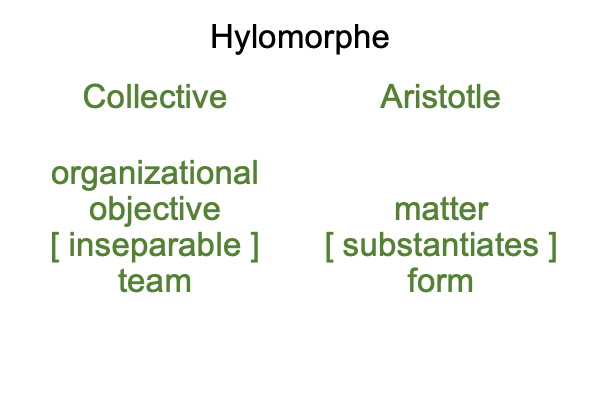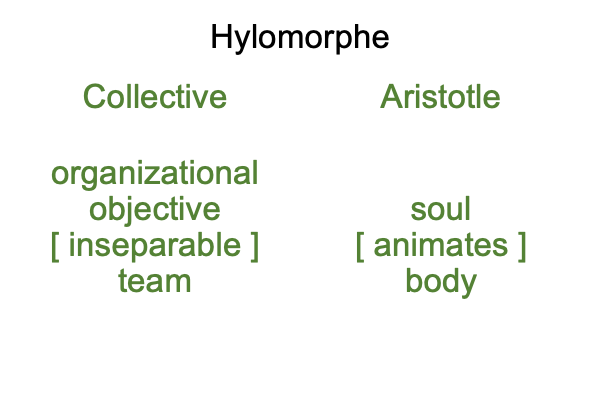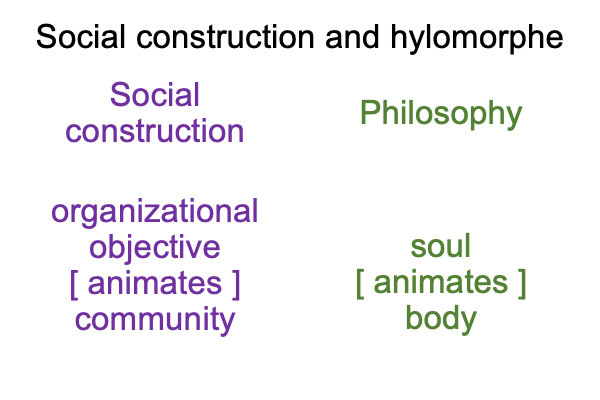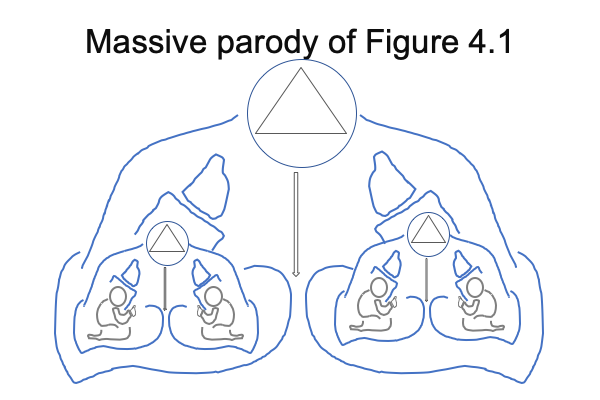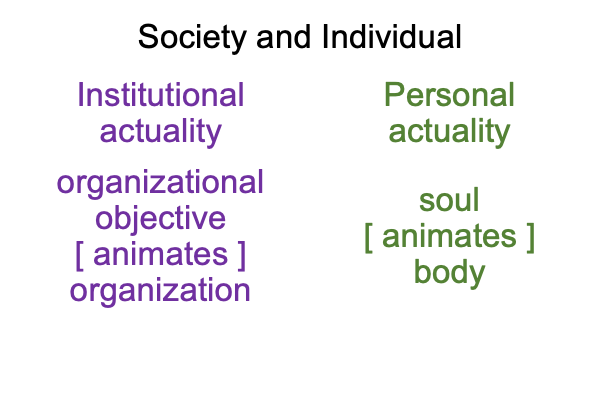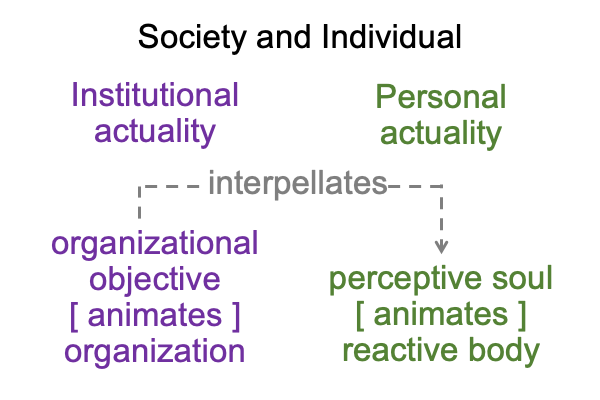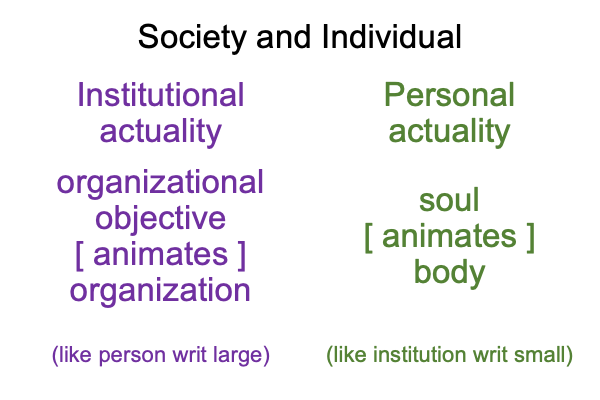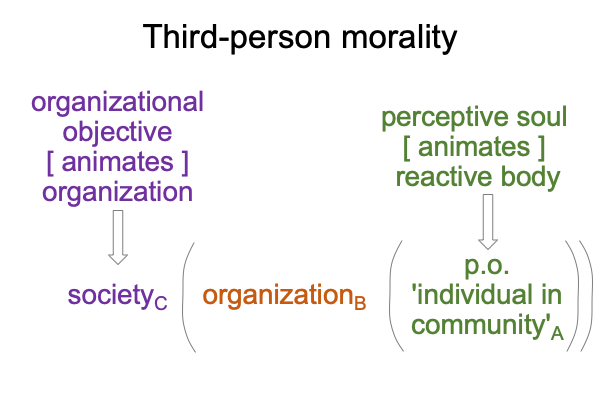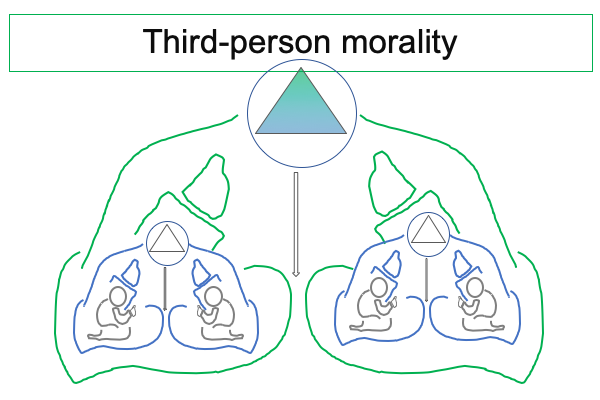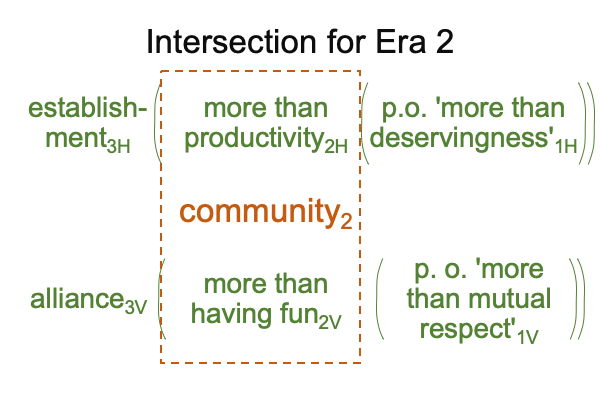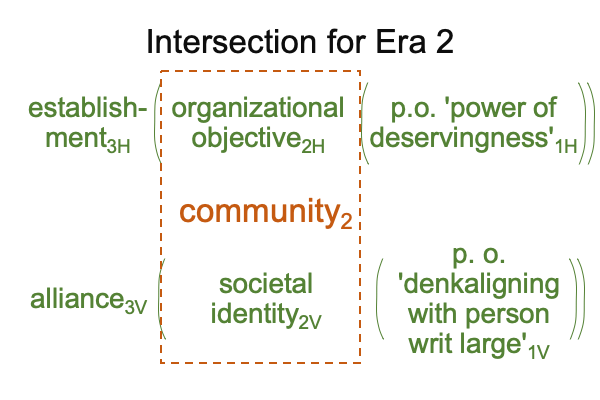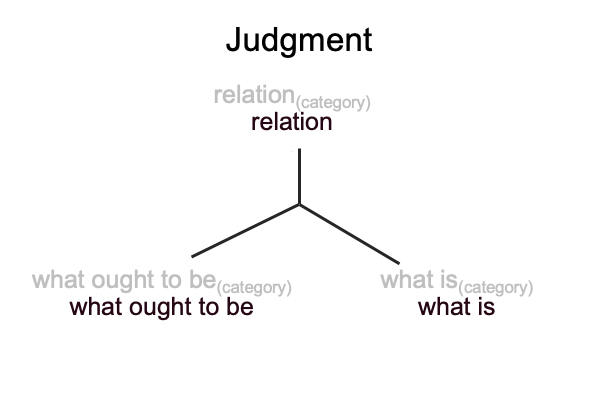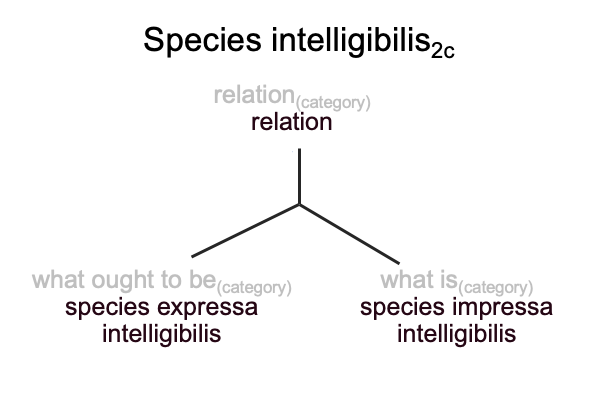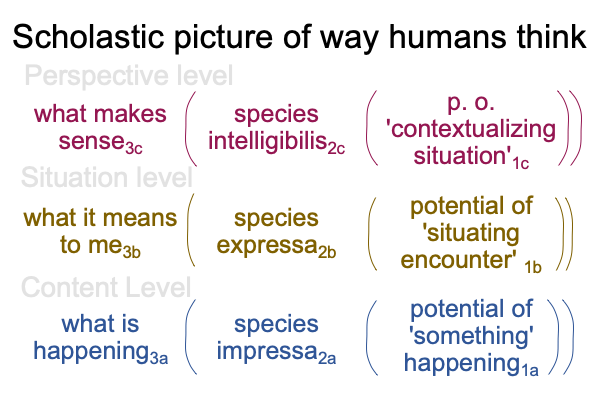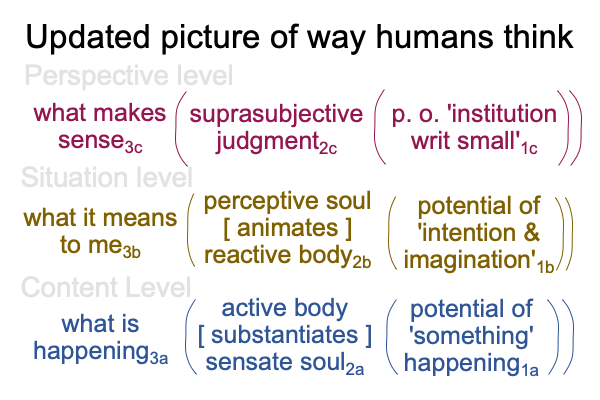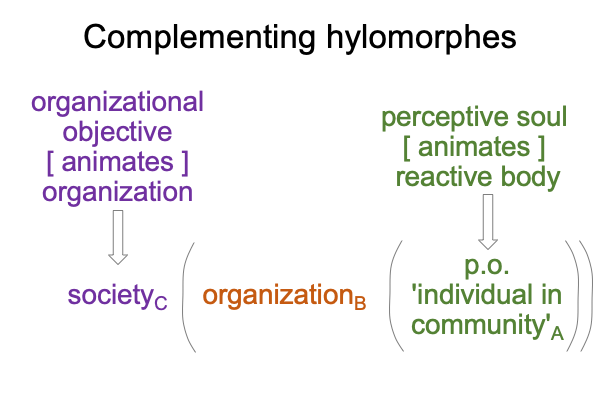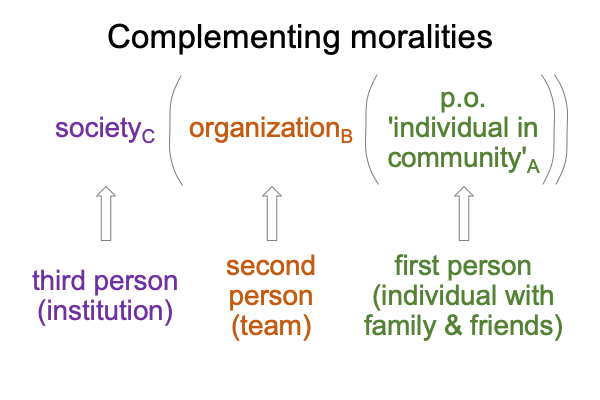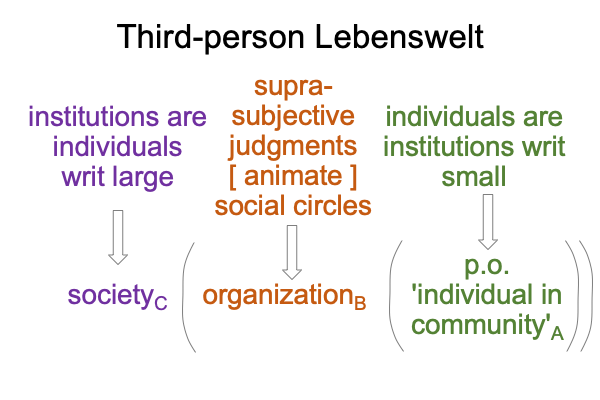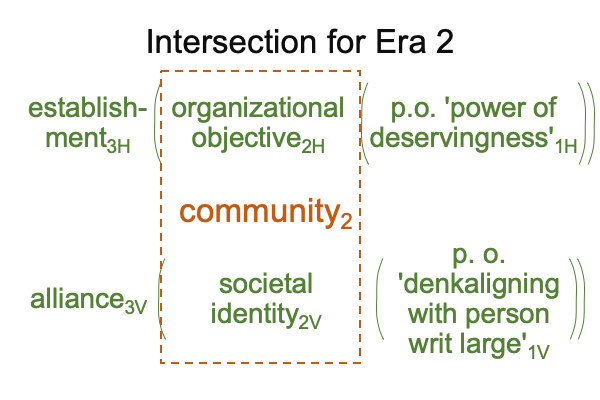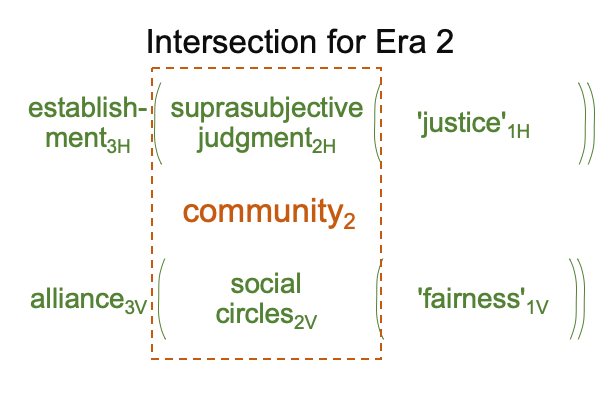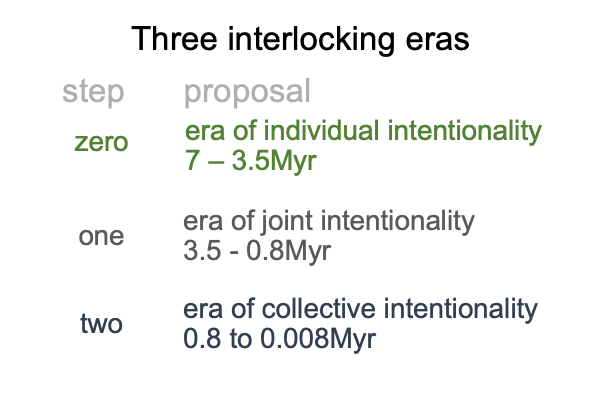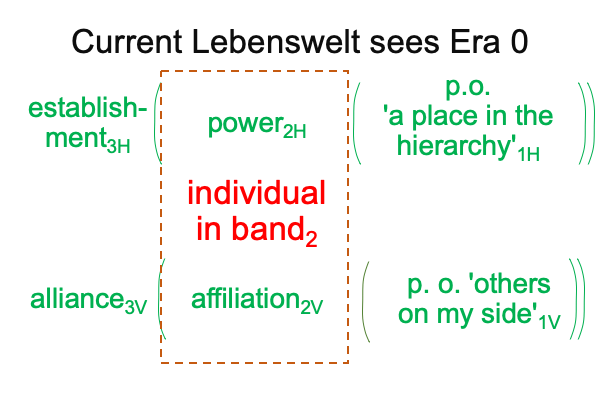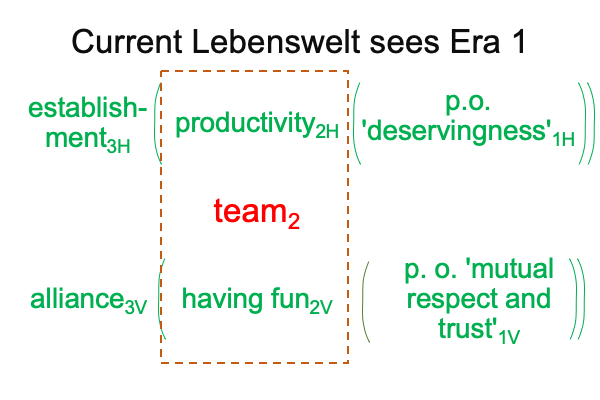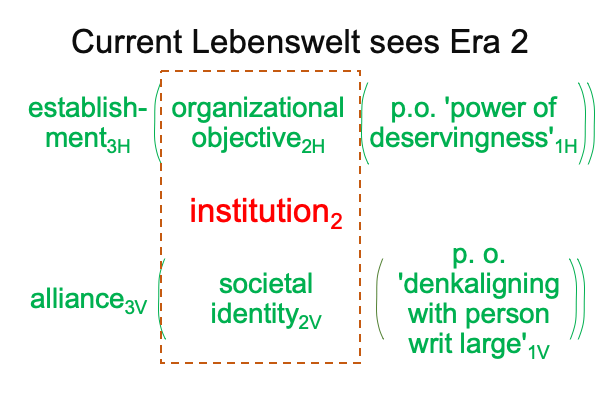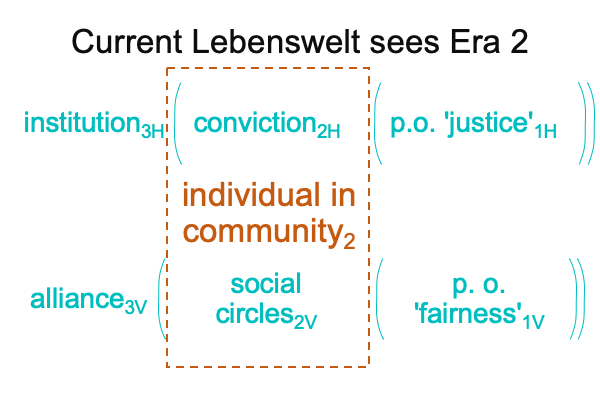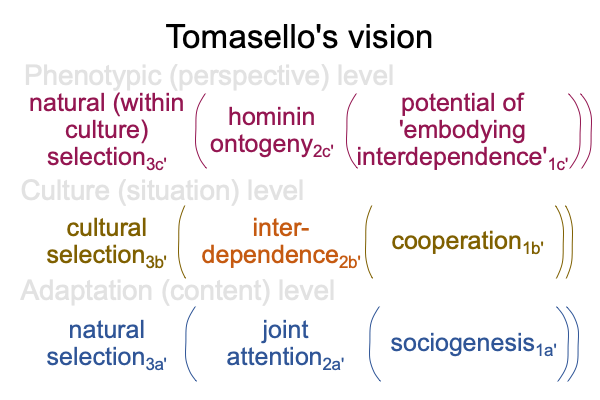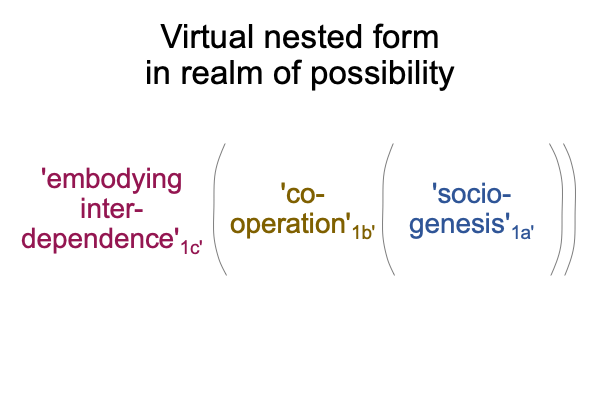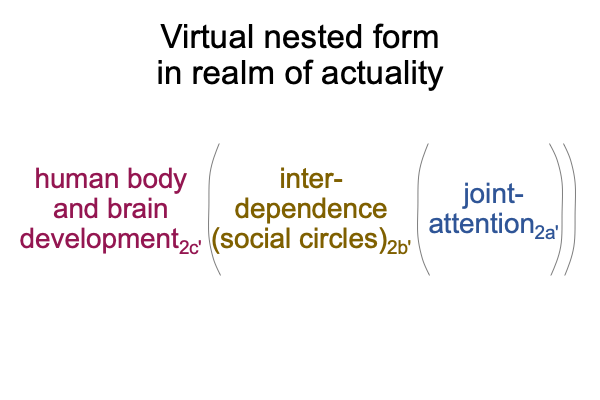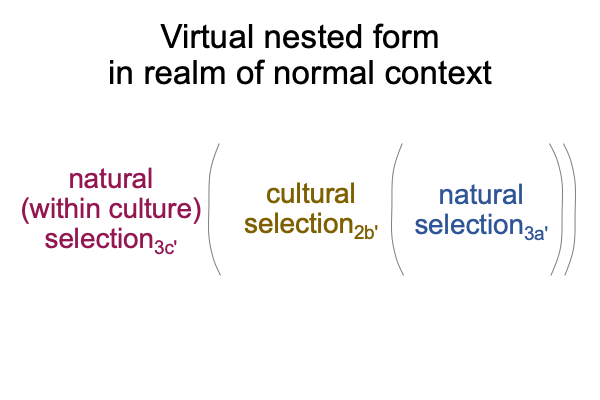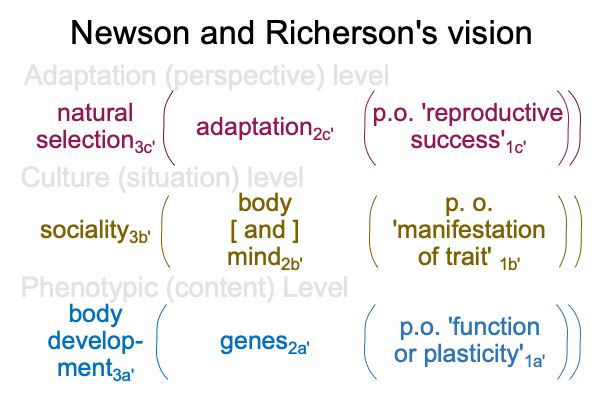Looking at Michael Tomasello’s Book (2016) “A Natural History of Human Morality” (Part 12 of 22)
0501 What does the prior blog imply?
As far as hand talk is concerned, the era of joint intentionality corresponds to the evolution of sensible construction and the era of collective intentionality corresponds to the evolution of social construction.
0502 Social construction is not sensible, yet, it leads to sensible constructions that otherwise would have never been imagined using sensible construction alone. How else can one culturally select for something more powerful than productivity2H and for something more worthy of affiliation than having fun2V? When it comes to communities, mega-bands and tribes, sensible thinking is not enough.
Of course, if this sounds a little crazy, then consider A Primer on Sensible and Social Construction, by Razie Mah. Also, consider the complementary views presented in How To Define The Word “Religion”. Both are available at smashwords and other e-book venues.
0503 Meanwhile, know this. As a man of science, the evolutionary anthropologist, Michael Tomasello, cannot model the natural history of human morality using the imagery of third-person morality. Why? The third-person is not “objective, in the modern sense of the word, but “suprasubjective” in the medieval scholastic sense of the word.
For the modern, “objective” is a proposition that holds despite what any of us think of it. The objective proposition stands outside ourselves.
For the scholastic, “suprasubjective” is a proposition that both contains and transcends the subjectivity (or attitudes of) every one of us. The suprasubjective proposition resides within and encompasses ourselves.
There is a difference. Plus, this difference is most apparent with explicit abstraction.
0504 In the Lebenswelt that we evolved in, hand-talk and hand-speech talk cannot perform explicit abstraction. They can only facilitate implicit abstraction. Therefore, long-lived traditions sustain intentional implicit abstractions that, for example, promote the harmony of social circles and select for individuals inclined to cogitate those collective implicit abstractions. Those inclined are blessed with reproductive success.
So, what am I saying? Where am I going with all this?
The era of collective intentionality must have the same relational structure as the previous eras.
However, because Tomasello hides what he is trying to discern behind the word, “objective”, the intersection is obscured.
Here is what I expect to see.
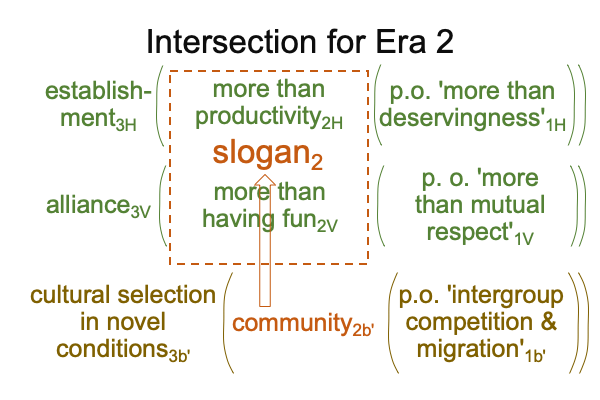
The slogan is a sign from a third person.
This slogan presents itself in the milieu of hand talk.

